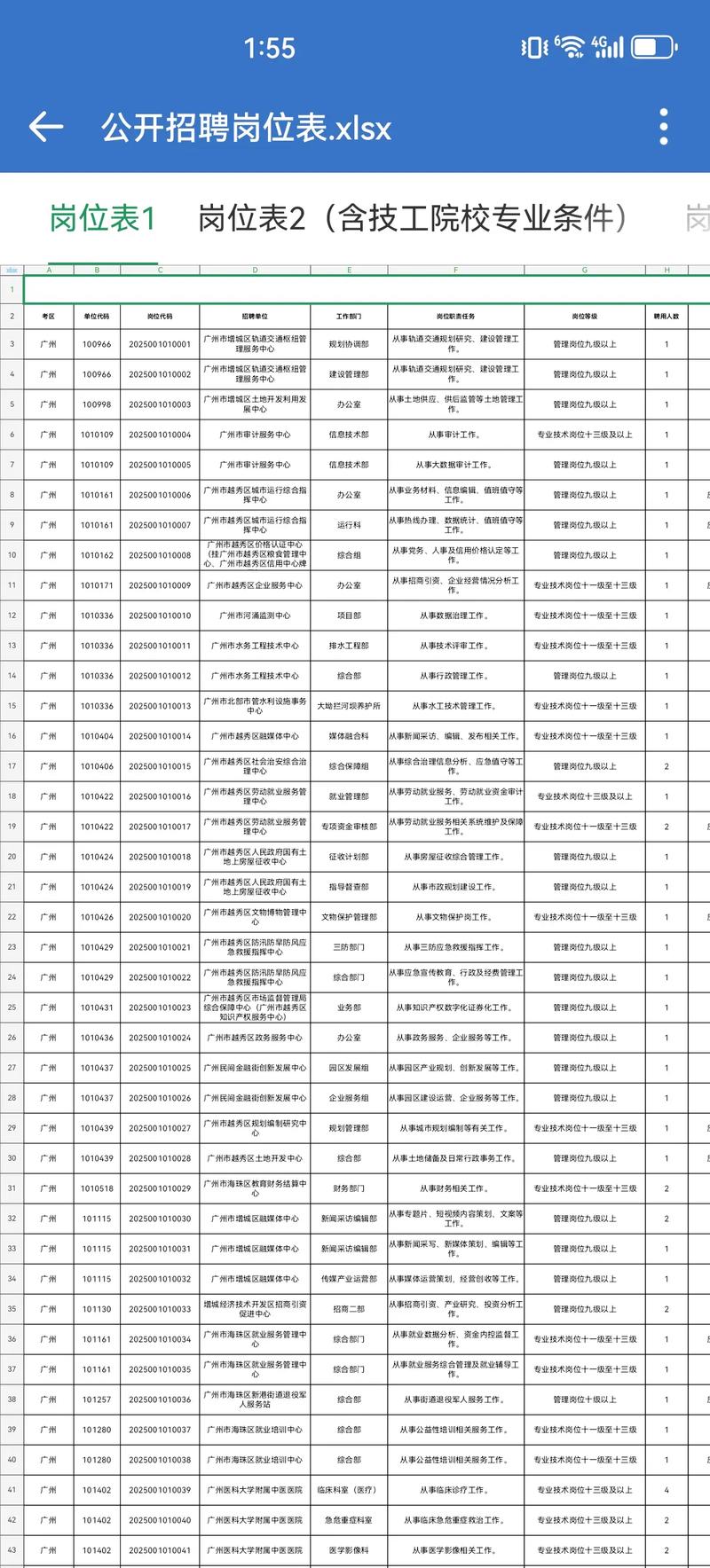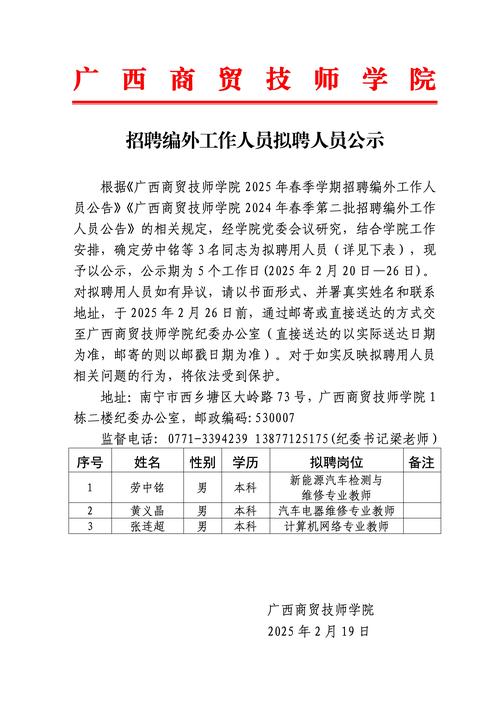2025广东广州市委网信办直属事业单位集中招聘高校毕业生拟聘用人员名单公示
人才政策
2025年08月12日 01:39 69
sansa2025
根据《广东省事业单位公开招聘人员办法》及《广东省事业单位2025年集中公开招聘高校毕业生公告》规定,经笔试、资格复审、面试、体检和考察等程序,现将拟聘用人员名单(见附件)及有关情况予以公示。

(图片来源网络,侵删)
一、拟聘用人员名单在网上公示5个工作日,公示时间:2025年6月20日至2025年6月26日。公示期间如对拟聘用人员有异议,请书面向中共广州市委网信办反映,反映情况的书面材料请写清或讲明异议事由,签署真实姓名及有效联系电话,不签署真实姓名的以及公示时间截止后不予受理。
二、公示期间群众反映有重大问题且线索明确的,由相关部门进行查证,确有影响聘用问题的,取消聘用资格。公示期满后,没有问题或反映的问题不影响聘用的,办理聘用手续。

(图片来源网络,侵删)
三、被聘用人员在接到聘用通知后,必须在规定时间内持相关证明材料报到。如无正当理由,逾期不报到的,取消聘用资格。
四、受理单位、联系方式、通讯地址
受理单位:中共广州市委网络安全和信息化委员会办公室
联系电话:020-83550860,020-83108423
通讯地址:广州市越秀区小北路65号华宇大厦5楼(邮政编码:510045)
点击查看
中共广州市委网信办直属事业单位2025年公开招聘工作人员公示名单
中共广州市委网络安全和信息化委员会办公室
2025年6月19日
相关文章

发表评论